While he’s known primarily for his musical abilities, Kanye West’s skills as a video marketer are just as remarkable.
With the release of his latest album, Ye, Kanye has taken his brand to the next level visually—and in the process, he’s used a few tactics and strategies that should make every B2B marketer sit up, take notice, and recognize the greatness of the work that’s on display.
If you haven’t yet seen what I’m talking about, then open up his homepage, at www.kanyewest.com, and watch and listen as the voice of Chris Rock blares out over a wide shot of a Wyoming campfire. “Remember this,” Rock tells us. “Rap music, hip-hop music, is the first art form created by free black men. And no black man has taken more advantage of his freedom than Kanye West.”
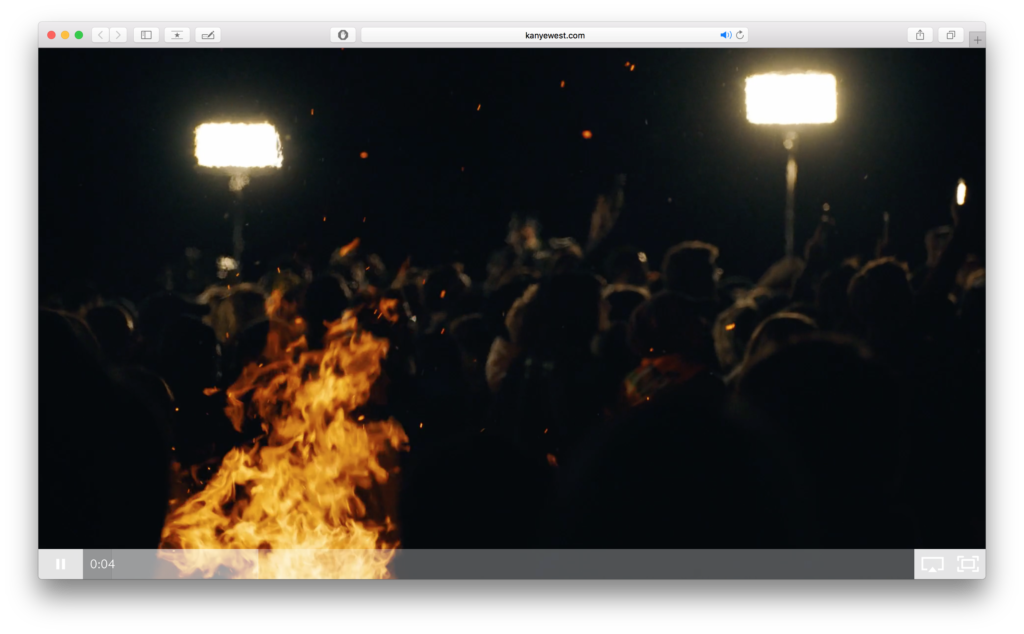
The video is consistent with everything we’ve seen from West over the past few months, and with Ye. It’s cohesive, subversive, funny—in other words, 100% Kanye.
While it might not look or sound quite like the average B2B company’s autoplaying homepage video, there’s a lot going on here that makes it worth looking a bit closer.
Yes, from launching a new fashion zine from a parking garage in New York City to dropping a highly anticipated album during a listening party at a rural Wyoming ranch, Kanye West has always been a master of the theatrical. You don’t have to be selling out Madison Square Garden to use the video-marketing tactics that he does, though—just take a few pages out of his book.
Make videos for you, not YouTube videos
I’m not a businessman; I’m a business, man! — Jay-Z, Kanye West – Diamonds From Sierra Leone (Remix)
YouTube is the second most popular social platform on Earth, creating tons of opportunities for businesses to share videos in a setting familiar to viewers. But creators who use YouTube as their primary video platform are limiting themselves in ways that Kanye won’t.
Every good B2B video marketer knows that although YouTube might be effective for getting eyeballs, the end goal needs to be bringing people back to your site and engaging with them there.
That’s how you turn those visitors into customers, not just social media fans.
That’s why, even though he maintains an extensive catalog of his work on YouTube and maintains and updates it frequently, Kanye put an autoplaying Wistia video on his homepage—not a YouTube embed.

The goal of YouTube is to get people to come back to and stay on YouTube. You can’t develop or grow your individual brand there the way you can on your own domain—it’s not in YouTube’s interest to have you sending your fans over to your website or engaging with you in any other way besides subscribing to your channel and watching whatever content you’ve put on the platform.
Artists can make money from places like YouTube (and Tidal and Spotify and so on), and at Kanye’s level, they can make a lot—but Kanye isn’t interested in just the revenue from profit-sharing. That’s why his work is on YouTube in the first place. He isn’t just an artist; he’s a brand, a business—he’s Ye. And that means when it comes to distribution, he thinks less like an artist and more like a B2B marketer.
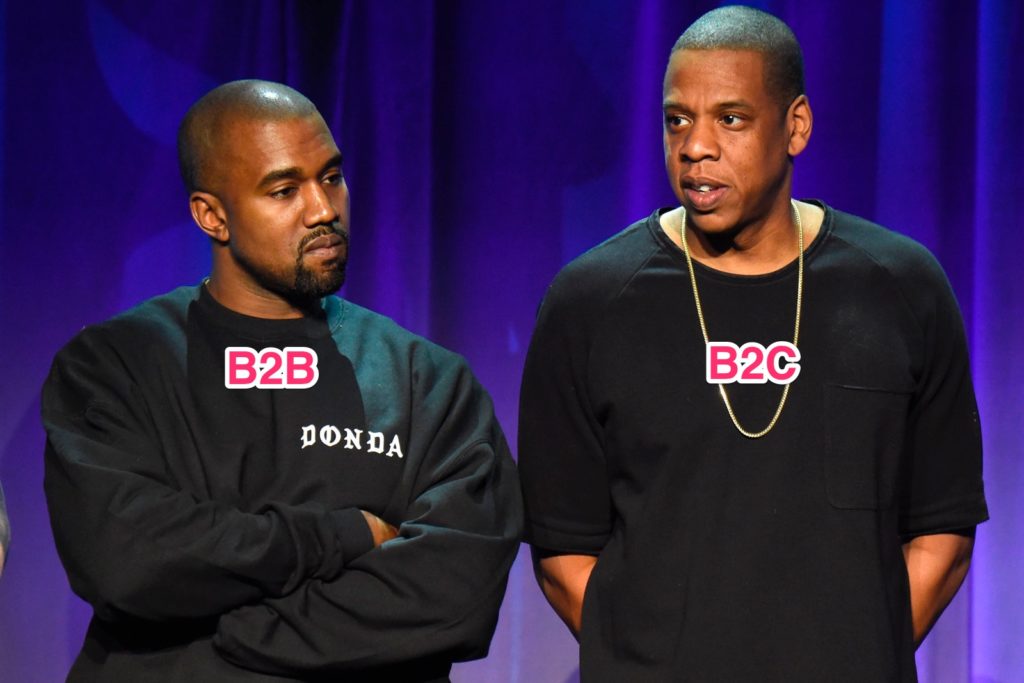
Kanye and his team use YouTube for three specific reasons:
- Posting music videos for singles
- Highlighting a temporary featured video (originally posted elsewhere)
- Directing people to his website via a CTA in the banner
The Kanye West channel is neatly organized, but sparse. If you’re looking for music videos, you can find a full catalog. It’s easy to sit back and passively enjoy the music.
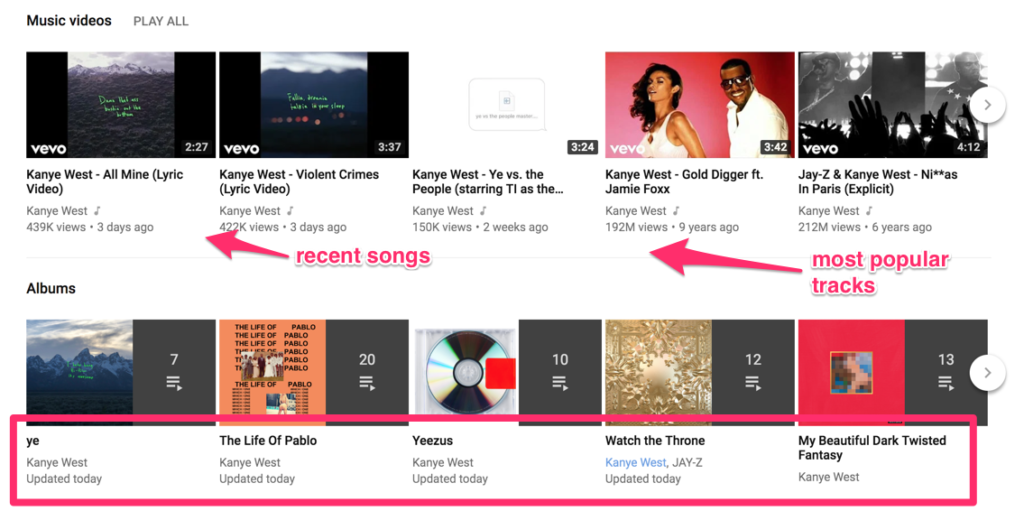
The video on kanyewest.com, on the other hand, is an experiential and experimental affair. It’s the “new Kanye,” the one that he wants you to see, the “behind the scenes” version that doesn’t exist on YouTube.
The Wistia player practically disappears while you’re watching this piece, which far eclipses anything on his YouTube channel (video-wise) in terms of depth and creativity. It’s an original work—not just a lyric video or a decades-old music video.
The Wistia embed allows Kanye to maintain complete control over how the video looks and feels on the page, exactly how it is going to be viewed, and exactly who is going to get all the analytics data on viewership (him). More importantly, it allows him to not cede any of the success of the video to a third-party platform—he’s able to keep it all on kanyewest.com, from which he can then drive people to his other sites or to his album.
It’s generally important to have some kind of presence on YouTube. Reposting content from your site to YouTube can increase discoverability, make it easy to embed on other platforms, and reach people who are watching related content. For certain niches, like educational videos about your product or industry, YouTube might well be the first place customers look.
Don’t, however, let YouTube take all of the credit—make sure your endgame is to bring people back to your site, where you can sell them on your product and get them into your funnel. Be like Kanye—let YouTube do the heavy lifting.
Sponsor experiences, not content
The subject of kanyewest.com’s autoplaying homepage video gives another hint about the kind of B2B marketing tactic that West is using to great effect with the release of Ye—marketing experiences rather than content alone.
At the Jackson Hole launch party, where Ye first dropped, celebrities were in attendance. Chris Rock gave a speech, and all kinds of cameras were rolling. At Kanye’s Wyoming party, a list of select attendees—artists, critics, radio hosts, music industry insiders—got to experience new music firsthand and mingle with each other. It was the ultimate influencer event, and many attendees shared their experiences on social media. The party was, admittedly, expensive. But the resulting coverage was more authentic and far-reaching than several sponsored posts.
New York Times critic Jon Caramanica shared a video of the party on Instagram:
https://www.instagram.com/p/Bjd_9Q4hjRM/?taken-by=joncaramanica
The Times then proceeded to publish two accounts of the evening, as well as a positive review of the album:
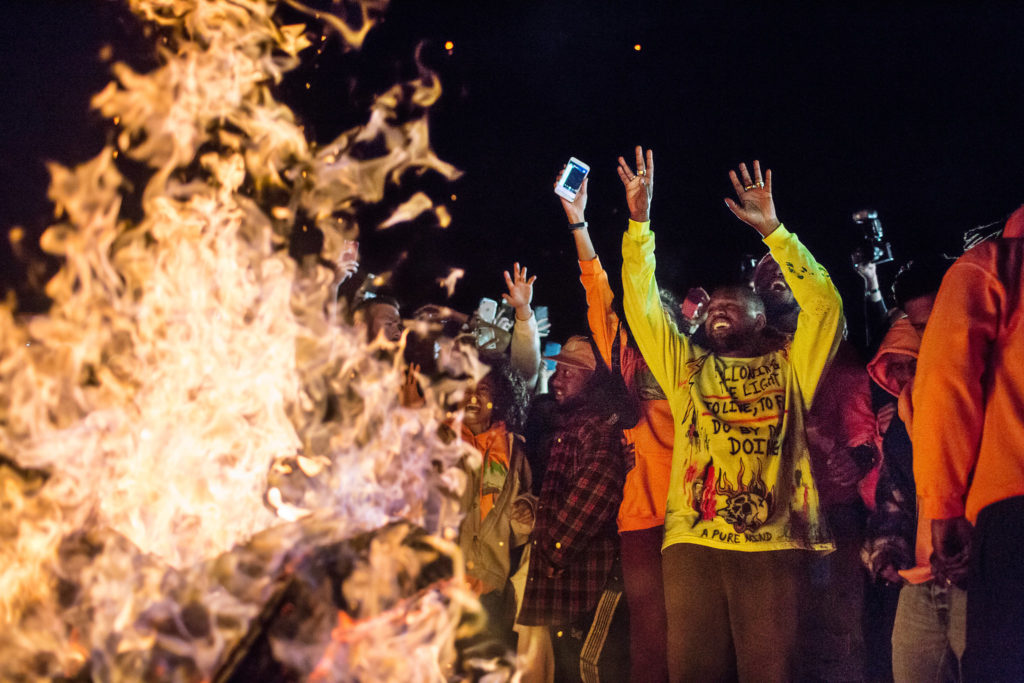
English DJ Tim Westwood (who has 700K YouTube subscribers) posted on several different social networks and enlisted his own producers to create this three-minute YouTube vlog about the Wyoming experience:
The Wyoming party was a mix between what Rolling Stone called “an old-school record-biz charm offensive” and a new campaign for the digital era. Kanye had previously gotten in trouble for his unfiltered tweets and controversial political remarks and may have been looking to make amends.
The overall effect was a tide of positive social buzz for Kanye—a welcome change after weeks of speculation over his sincerity and sanity following a series of controversial tweets about U.S. President Donald Trump.
What really made West’s video surpass the classic “charm offensive” accompanying an album drop was that it was recorded, distributed, and watched by millions of people around the world, not just those in attendance; he turned the event into an experience that anyone could participate in.
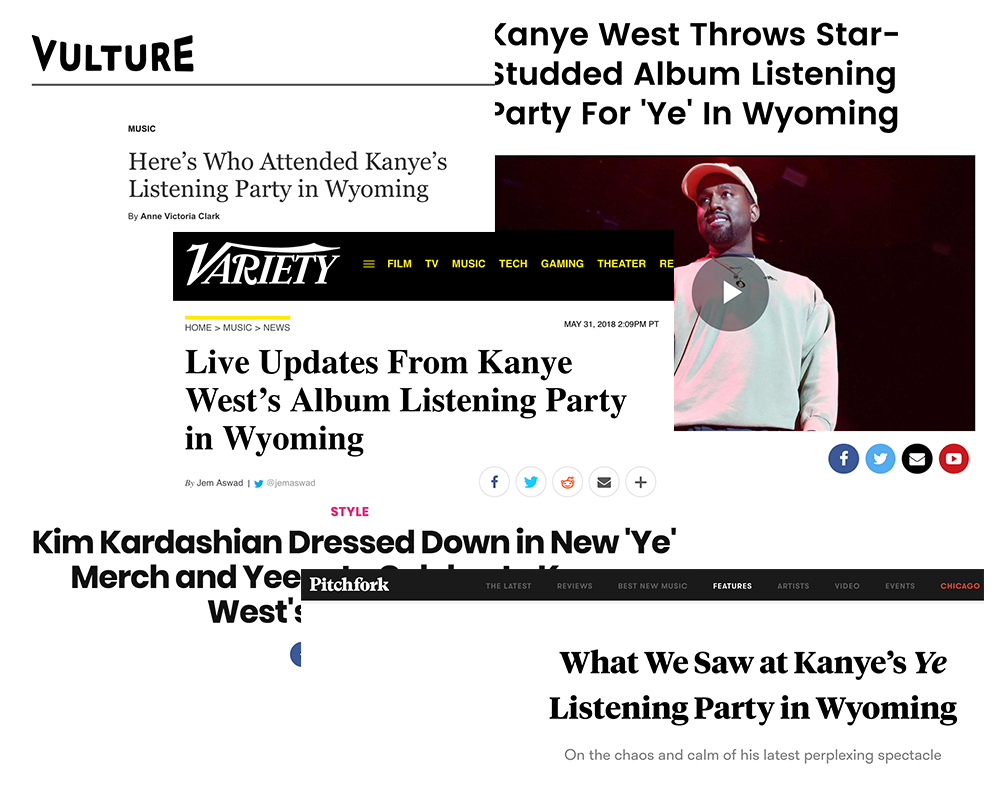
Through social media (and traditional media), fans could get a sense of what it was like to be there in Wyoming with Kanye’s inner circle. They could see him through the eyes and camera lenses of those who have observed him in an intimate setting. This kind of engagement is more valuable than any directly sponsored post.
And because Kanye let others generate their own interpretations of the experience, the resulting videos were more credible. Live and digital experiences give people an opportunity to create content that supports your brand’s message, without that message coming from you. By allowing others to spread your message, you can create authentic word-of-mouth buzz that begins with specific people and reaches entire networks.
Be consistently inconsistent
Kanye is a marketing chameleon. He has changed his brand more times than you can think. What’s important is that he’s completely consistent in voice, message, and aesthetic when he is focused on marketing a particular project.
Between projects, who knows what Kanye is? What matters is that during My Beautiful Dark Twisted Fantasy, everything that he put out was long, abstract, demonic, and a deep, deep, red:
For the release of Yeezus, Kanye commissioned projections of the song “New Slaves” on 66 different buildings in cities around the globe, the stark black-and-white image of West a powerful counterpart to the song’s themes of race, identity, and alienation.
In the video above, the original projection found distribution amplification in the many straight-to-social-media recordings that were made of the event by Kanye fans—proving again the point that crafting experiences rather than content provides the highest leverage.
Fast-forward to 2018 and Ye. Kanye addresses some familiar themes, such as fame and race, but introduces new ones, including the recent revelation that he struggles with bipolar disorder. The album cover—a simple, scenic shot of the Wyoming wilderness—was supposedly taken by Kanye himself on the drive to the party.

The photo works perfectly with the videos released on Kanye’s homepage, the social media posts by influencers, and the videos on another landing page, wegotlove.com. This is a carefully constructed image of haphazardness and immediacy. Through social networks and multimedia, Kanye’s creating a composite image of himself that looks and feels natural to the communication styles of today.
However, as we now know, he has a hand in every Tweet, Instagram post, Snapchat video, YouTube video, and even press articles. Despite the appearance of native content, there’s still a strong sense of brand continuity. To emulate his style, you’d have to balance bold, experimental acts with a deep knowledge of the way people engage with each other and with brands on social media. Only then can you guide people toward your goals with an invisible hand.
Finding video freedom
Ultimately, Kanye’s videos look different than everyone else’s because he’s been extremely adaptable to new ways of communicating. He doesn’t mind when social media rules change, and he uses his mistakes to come back stronger than ever. By focusing his creative energies on homepage videos rather than on YouTube videos, creating unique experiences for fans and media members, and developing consistent themes for each album release, Kanye shows that he can control the message while still engaging with fans in ways that seem fresh and new.

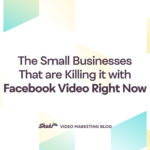
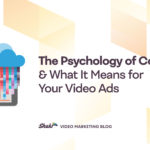
1 comments On Why Kanye West is One of the Best B2B Video Marketers Ever
Pingback: Why Kanye West is One of the Best B2B Video Marketers Ever – Just Internet Marketing ()
Comments are closed.